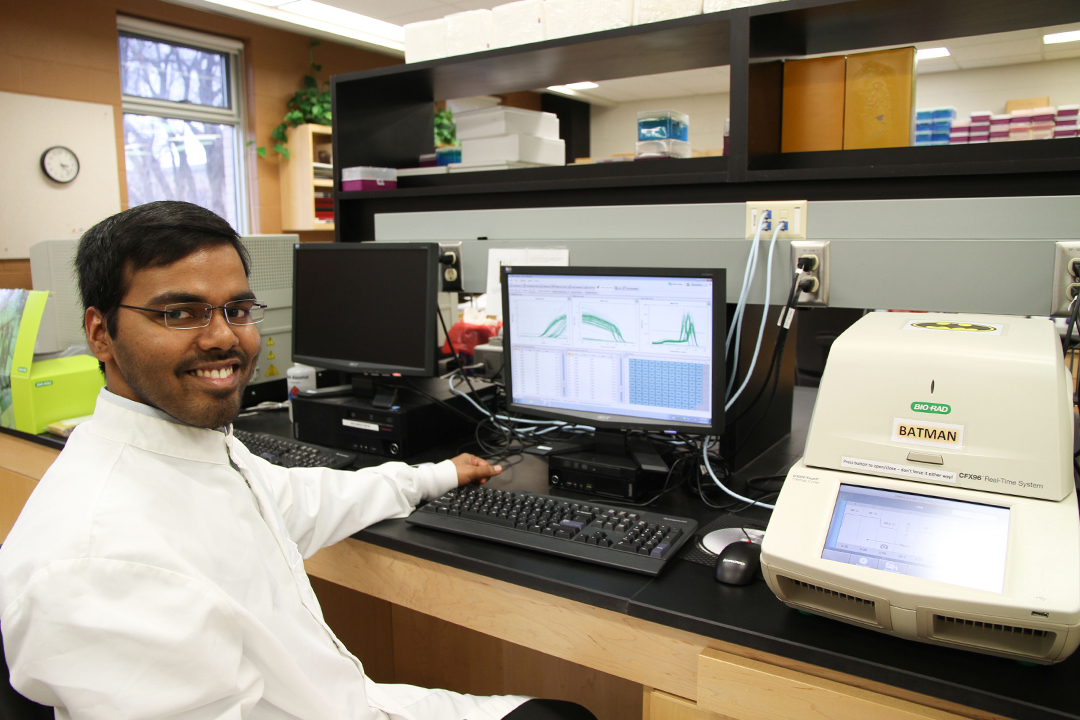
Grad students research bats’ disease immunity
Most people react to bats in their neighbourhood in the same way that they would if a mouse skittered across the kitchen floor—with anxiety, disgust, maybe even a short squeal of terror.
By HenryTye GlazebrookWhat many people don’t realize, however, is that those fanged, winged mammals are not only creepy-looking creatures. In fact, they may hold the key to bringing the severe effects of some disabling human illnesses down to a manageable minimum.
“When there is infection in the lungs, it causes an inflammation which leads to symptoms—fever, coughing and sometimes shortness of breath,” said PhD student Sonu Subudhi. “Human beings tend to show an enormous amount of inflammation to certain virus infections and that is one of the reasons why humans suffer from severe disease, which may have fatal consequences. In such cases, inflammation gets activated in people like crazy, but for some reason in bats it is kept very low.”
Subudhi is part of a team of researchers at the Western College of Veterinary Medicine led by professor Vikram Misra. The group is currently studying the infection patterns of coronaviruses, a species of virus in bats that includes Middle Eastern Respiratory Syndrome (MERS) and Severe Acute Respiratory Syndrome (SARS).
Coronaviruses have been an area of increasing importance to researchers as advancing technology has eased their spread, with the SARS outbreak of 2002-04 one example of how an infection can expand beyond geographic boundaries and become a world-wide problem.
“These viruses can be transferred from one person to the other, and people travel all around the world all the time,” Subudhi said. “A person may be unknowingly carrying the virus and travel to other countries.
“In 24 hours, one can be anywhere in the world, and we don’t have fool-proof screening procedures necessary to check whether a person has the virus or not. That makes things scary and that’s why we need to focus on these issues even if they might not be right here in Canada now. They could be in the future.”
The SARS outbreak tremendously increased researchers’ interest in bats, which were discovered to be carrying a strain of coronavirus similar to what was infecting humans. What sets these animals apart, said Subudhi, is how they react to the infection.
“We suffer from fever, cough, shortness of breath, and after you have had the infection for a while, if you’re not able to clear it, you could get pneumonia, which could progress to multi-organ failure. That’s how the virus could spread to all the organs and you may succumb to it,” he said. “In bats, that’s not the case. They somehow control the infection.”
Unlike humans and other animals, bats can carry viruses for months without ever succumbing to the illness. Subudhi attributes this to the mammal’s unique evolutionary history.
“Bats and viruses have evolved for a long, long time,” he said. “Bats have been on Earth for a much longer time than humans—years and years and years. They are much older than we are. Since they are such an old species, they have had more time to evolve with the viruses. They have co-evolved for all these years and this is where the persistent infection comes into play.”
Each of their unique traits highlight bats’ strong resilience to viral infections and opens the door to the possibility, however small, of replicating their defenses in humans. However, Subudhi said that such a goal is lofty at best, at least in the short term.
In the meanwhile, Subudhi is excited for what his research could mean for expanding the human ability to control the spread of illness and slow or prevent the spillover from animal hosts to people. Rabies, for instance, ran rampant until the discovery of a vaccine for both humans and animals, which has now reduced the disease to very low levels.
“There might be a possibility that, if we know these factors, we might be able to more effectively control it. If you don’t know what’s happening and how it’s spilling, there’s no way of controlling a spillover,” Subudhi said. “Once we know that, we might be able to control it.”

